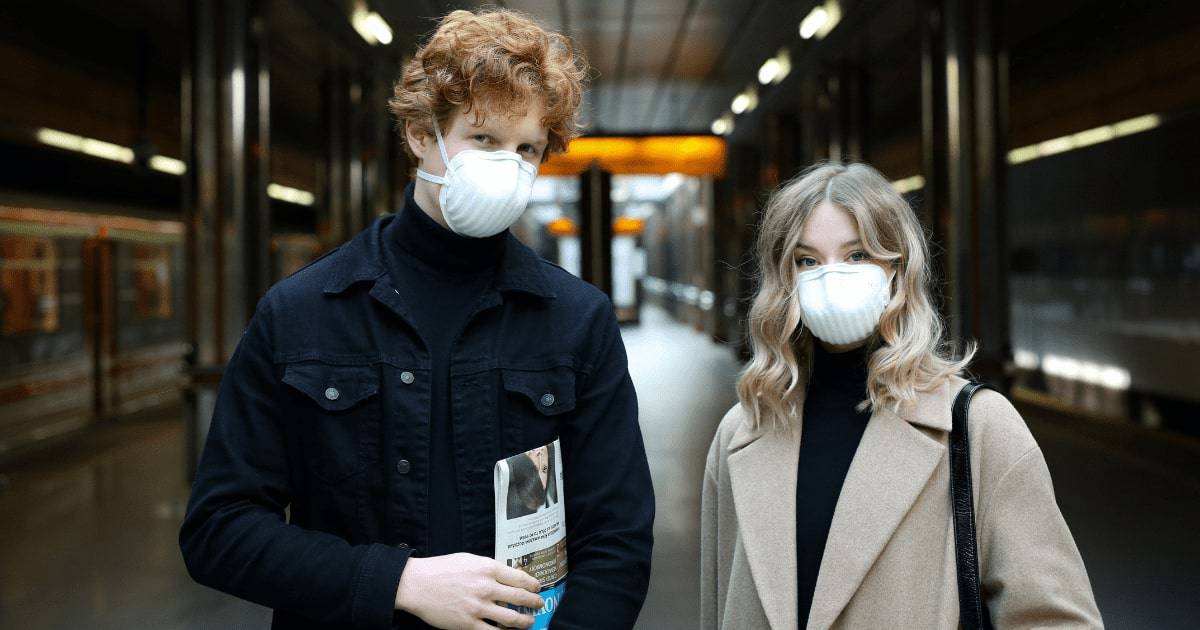Surely you've noticed that the internet has been flooded with various news, photos, and videos "proving" that masks and respirators are contaminated with worms—whether natural, living, or even robotic—that pose a threat to human health. This information has logically sparked panic and concerns among people about wearing these protective devices. But is there really something to fear, or is it just another set of fake news surrounding the COVID-19 pandemic?

With information claiming that strange parasites inhabit masks and respirators, a veritable avalanche of alarming reports has unfolded in recent weeks. One terrifying story follows another, and no one knows what to believe anymore. That's why experts immediately delved into the matter, thoroughly examining it up close.
Masks and Respirators Under the Microscope
The Biological Center of the Czech Academy of Sciences quickly undertook the examination of alleged parasites in protective equipment. They scrutinized various types of respirators and masks, thoroughly examining them with a binocular microscope and a light microscope. And what did they find?
Masks and respirators are made of non-woven fabric composed of layers of fibers much thinner than human hair. However, they form such a dense filter that effectively captures bacteria, viruses, and aerosol droplets exhaled by the wearer. For nano masks and nano respirators, thanks to the nanofiber membrane, the capture of bacteria and viruses is proven to be as high as 99.9%, making them the most effective protective gear against the SARS-CoV-2 coronavirus, which causes COVID-19.
Among the typical fibers with a smooth surface similar to synthetic fibers, they did find several black objects. However, their structure differs significantly not only from the mask or respirator fibers but also from anything living. So, they are not worms, and certainly not the feared hairworm or other types of parasites.
What's Hiding in Masks and Respirators?
The objects found by experts at the Biological Center of the Czech Academy of Sciences structurally resemble fragments of natural fibers. However, it's difficult to speculate about their origin. Essentially, they are ubiquitous microscopic debris that floats all around us and forms dust and common dirt when settling on these devices after being taken out of the packaging, during handling, or wearing.
But it could also be the material of the masks and respirators themselves. The damaged end of the fiber is narrower, frayed, and may indeed resemble a foreign fiber, but it is not.
But How Can It Move?
You may still be wondering how these fibers and debris can move when they are lifeless objects. There are several possible causes, with electrostatic charge being a major factor. This charge is what allows masks and respirators to fulfill their filtration efficiency, capturing aerosol, viruses, and bacteria in a static environment. However, once taken out of the packaging and stretched, this charge significantly increases, and as a result, loose fibers in non-woven fabric may move.
The same is true for airflow. The fibers used to make these protective devices are very fine and light, and even the slightest breeze, which you may not even notice, can move them.
Another cause is humidity. Once you expose any fiber, including hair or dirt, to moisture, it begins to twist, creating the appearance of movement.
Don't Worry and Protect Yourself!
As evident from the information above, this is just another piece of misinformation that has emerged more than enough during the coronavirus pandemic. Masks and respirators are completely harmless and, on the contrary, excellent in performing their protective function for the respiratory system against viruses, bacteria, and other microorganisms that threaten our health. So, there is nothing to fear, and you can continue to use these protective measures safely.
#produkty#https://www.nanospace.store/nano-respirators/


